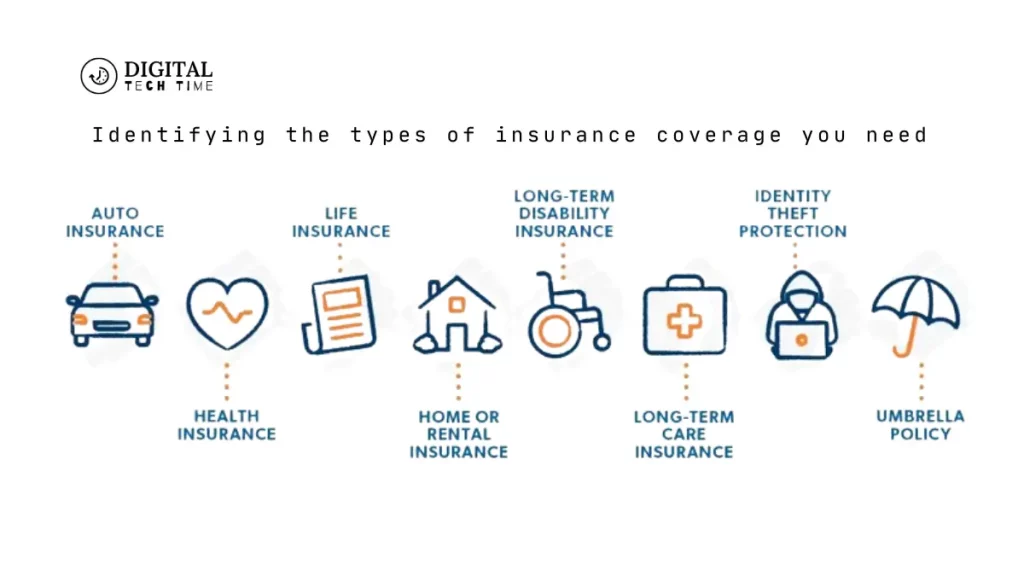7-Step Strategy for Choosing Business Insurance Levantam
As an entrepreneur, safeguarding your business from potential risks is paramount to ensuring its long-term success. In an ever-changing business landscape, unexpected events can strike any moment, leaving you vulnerable to financial losses, legal liabilities, and operational disruptions. This is where business insurance comes into play, acting as a safety net that protects your venture against unforeseen circumstances.
Choosing Business Insurance Levantam is a crucial investment that provides peace of mind and financial security. It protects you against potential losses and demonstrates your commitment to responsible business practices, fostering trust among your stakeholders, clients, and partners. By carefully selecting the right insurance coverage, you can mitigate risks, comply with legal requirements, and position your business for sustainable growth.
Table of Contents
Step 1: Assessing your business risks
The first step in choosing the appropriate business insurance is to conduct a comprehensive risk assessment. This involves identifying and evaluating the potential threats and vulnerabilities that your business may face. Some common risks to consider include:
- Property damage: Fires, natural disasters, theft, or vandalism can cause significant damage to your physical assets, such as buildings, equipment, and inventory.
- Liability claims: Your business could be held liable for injuries or damages caused to third parties, including customers, employees, or the general public.
- Cyber threats: In today’s digital age, cyber-attacks, data breaches, and system failures can compromise sensitive information and disrupt operations.
- Business interruption: Unforeseen events, such as power outages, supplier disruptions, or natural disasters, can temporarily halt your business operations, leading to financial losses.

By thoroughly understanding the risks specific to your industry, location, and business model, you can make informed decisions about the types of insurance coverage you require.
Step 2: Identifying the types of insurance coverage you need
Based on your risk assessment, the next step is to determine the appropriate types of insurance coverage for your business. Some common forms of business insurance include:
- General Liability Insurance: This coverage protects your business against claims of bodily injury, property damage, and personal injury (such as libel or slander) caused by your operations, products, or services.
- Professional Liability Insurance (Errors and Omissions): If your business provides professional services or advice, this insurance safeguards you against claims of negligence, errors, or omissions in your work.
- Commercial Property Insurance: This coverage protects your physical assets, such as buildings, equipment, inventory, and furniture, from damage or loss due to fires, storms, theft, or vandalism.
- Business Interruption Insurance: In the event of a covered loss that temporarily halts your operations, this insurance can provide financial compensation for lost income, rent, and other expenses during the period of disruption.
- Cyber Liability Insurance: As cyber threats become more prevalent, this coverage can protect your business against data breaches, cyber-attacks, and other digital risks, covering expenses related to recovery, notification, and potential legal liabilities.
- Workers’ Compensation Insurance: In most states, this insurance is legally required to cover medical expenses and lost wages for employees who sustain job-related injuries or illnesses.
- Commercial Auto Insurance: If your business owns or operates vehicles, this insurance can cover damages, injuries, and liabilities resulting from accidents involving those vehicles.

These are just a few examples, and depending on your specific business needs, you may require additional or specialized coverage.
Step 3: Researching and comparing insurance providers
Once you have identified the types of insurance coverage your business requires, it’s time to research and compare different insurance providers. Here are some factors to consider:
- Reputation and financial strength: Look for reputable insurance companies with strong financial ratings from independent agencies like A.M. Best, Moody’s, or Standard & Poor’s. This ensures the insurer has the financial stability to pay claims when needed.
- Coverage options and customization: Evaluate the breadth of coverage options each provider offers and their ability to tailor policies to your business needs.
- Customer service and claims handling: Research the insurer’s track record for responsive customer service, efficient claims processing, and fair claim settlements.
- Industry expertise: Consider providers that specialize in or have extensive experience in your industry, as they may better understand your unique risks and coverage needs.
- Cost and deductibles: Compare premium rates and deductible amounts across different insurers to balance comprehensive coverage and affordability.
Also Read: How to Master Volume Control for Skype on Windows 10
Step 4: Evaluating the financial stability of insurance companies
When selecting an insurance provider, assessing their financial stability and ability to pay claims is crucial. Here are some key factors to consider:
- Financial ratings: Reputable rating agencies like A.M. Best, Moody’s, and Standard & Poor’s evaluate insurance companies based on their financial strength, operating performance, and ability to meet policyholder obligations. Look for insurers with solid ratings, typically A or higher.
- Company size and market share: Larger, well-established insurance companies with a significant market share tend to have more financial resources and stability to handle claims and weather economic downturns.
- Claims-paying history: Research the insurer’s record of promptly and fairly paying claims. You can check consumer complaint ratios and reviews from industry organizations or regulatory bodies.
- Reinsurance arrangements: Insurers often transfer a portion of their risk to reinsurance companies, which can provide additional financial backing and claims-paying capacity.

By evaluating insurance companies’ financial stability, you can have greater confidence in their ability to fulfill their obligations and protect your business in the event of a covered loss.
Step 5: Reviewing policy terms and conditions
Once you have narrowed down your options, reviewing each insurance provider’s policy terms and conditions carefully is essential. This step ensures you understand the scope of coverage, exclusions, and limitations before making a final decision. Here are some key aspects to consider:
- Coverage details: Thoroughly review the specific coverages included in the policy and any exclusions or limitations that may apply. Ensure that the coverage aligns with your business risks and needs.
- Policy limits and deductibles: Understand the maximum amount the insurer will pay for a covered claim (the policy limit) and the amount you’ll need to pay out-of-pocket before coverage kicks in (the deductible).
- Endorsements and riders: Evaluate any additional endorsements or riders that can be added to the policy to enhance or customize coverage for your business operations.
- Claims process and requirements: Review the procedures for filing a claim, including any documentation or notification requirements, to ensure a smooth claims process.
- Renewal terms and conditions: Understand the policy’s renewal terms, including any potential rate increases or changes in coverage that may occur upon renewal.
By thoroughly reviewing the policy terms and conditions, you can ensure that the coverage aligns with your business needs and avoid any surprises or gaps in protection.
Step 6: Obtaining insurance quotes and comparing prices
With a clear understanding of your coverage needs and the policy terms, the next step is to obtain quotes from multiple insurance providers and compare prices. Here are some tips for this process:
- Provide accurate and complete information: When requesting quotes, provide detailed and precise information about your business, including its size, operations, revenue, and risk profile. This will ensure the quotes are tailored to your needs and allow for an accurate comparison.
- Compare apples to apples: Compare quotes with similar coverage levels, limits, and deductibles. Variations in these factors can significantly impact the premium cost.
- Consider bundling options: Many insurers offer discounts or package deals when you bundle multiple types of coverage, such as general liability and commercial property insurance.
- Negotiate for better rates: Be bold and negotiate with insurers, especially if you have a good claims history or are willing to take on higher deductibles.
- Review quotes carefully: In addition to the premium cost, carefully review the coverage details, exclusions, and policy terms to ensure you are getting the protection your business needs.
By obtaining multiple quotes and comparing prices, you can find the most cost-effective insurance solution that meets your coverage requirements and fits within your budget.
Step 7: Making the final decision and purchasing your business insurance
After carefully evaluating all the factors, including coverage needs, policy terms, financial stability, and pricing, it’s time to make the final decision and purchase your business insurance. Here are some considerations for this step:
- Review your decision: Before finalizing your purchase, review the coverage details, policy limits, deductibles, and exclusions to ensure they align with your business needs and risk profile.
- Consult with professionals: If you have any lingering questions or concerns, consider consulting with a licensed insurance agent or broker who can provide expert guidance and recommendations tailored to your business.
- Complete the application process: Once you have selected the insurance provider and policy, follow their process carefully, providing accurate and complete information to avoid delays or issues.
- Review and understand the policy documents: Upon receiving your documents, take the time to thoroughly review and understand the terms, conditions, and coverage details. Feel free to ask your insurance provider or agent for clarification on any policy aspect.
- Maintain proper records: Keep detailed records of your insurance policy, including coverage details, policy numbers, and contact information for your insurance provider. This will streamline the claims process if the need arises.

By following these steps, you can confidently purchase the appropriate business insurance coverage, providing your venture with the protection it needs to navigate potential risks and uncertainties.
Also Read: How to Clear Your Windows Delivery Optimization Cache
Additional considerations for choosing business insurance
While the seven steps outlined above provide a comprehensive framework for selecting business insurance, there are additional factors to consider:
- Regulatory requirements: Certain types of insurance coverage may be legally required depending on your industry and location. Consult with legal professionals or industry associations to ensure compliance with all applicable regulations.
- Business growth and changes: Your insurance needs may change as your business evolves and expands. Regularly review your coverage to ensure it remains adequate and make adjustments as necessary.
- Risk management practices: Implementing robust risk management practices, such as safety protocols, employee training, and data security measures, can help mitigate risks and lower insurance premiums.
- Claims history: Your business’s claims history can significantly impact your insurance rates. Maintaining a good claims record and promptly addressing any issues can help keep your premiums manageable.
- Professional advice: Consider seeking guidance from insurance professionals, such as agents or brokers, who can provide valuable insights and recommendations based on their expertise and industry knowledge.
By considering these additional factors, you can make more informed decisions and ensure that your business insurance strategy remains comprehensive and practical.
Frequently Asked Questions
Q: How often should I review my business insurance coverage?
A: It’s generally recommended to review your business insurance coverage annually or whenever there are significant changes in your operations, such as expansion, relocation, or the introduction of new products or services. Regular reviews ensure that your coverage remains adequate and aligned with your evolving business needs.
Q: Can I bundle different types of insurance coverage?
A: Yes, many insurance providers offer bundled packages that combine multiple types of coverage, such as general liability, commercial property, and workers’ compensation insurance. Bundling can often result in discounted premiums and simplified policy management.
Q: What happens if I underinsure my business?
A: Underinsuring your business can leave you vulnerable to significant financial losses in the event of a covered claim. If your insurance coverage is insufficient, you may be responsible for paying out-of-pocket expenses that exceed your policy limits. Proper risk assessment and adequate coverage are crucial to protect your business.
Q: How can I lower my business insurance premiums?
A:There are several strategies to potentially lower your business insurance premiums, such as increasing deductibles, implementing robust risk management practices, maintaining a good claims history, and shopping around for competitive quotes from different providers. Additionally, some insurers offer discounts for bundling policies or meeting specific criteria like industry certifications or safety programs.
Q: Do I need to purchase business insurance if I’m a sole proprietor?
A: While business insurance may not be legally required for sole proprietors in some cases, it is still highly recommended. Business owners face various risks, including liability claims, property damage, and potential interruptions. Adequate insurance coverage can protect your assets and ensure the continuity of your operations.
Conclusion
Choosing the right business insurance is crucial for long-term success and financial stability. It protects assets and financial well-being, demonstrating responsible business practices. Regular reviews and adjustments are necessary to align with evolving business needs. Investing in comprehensive and cost-effective insurance ensures the business’s success. By mitigating risks and fostering trust, businesses can position themselves for sustainable growth and long-term success.







